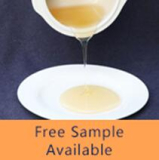3,4-Dihydroxyphenylethanol Suppliers, 3,4-Dihydroxyphenylethanol Manufacturers.

20%, 99% Hydroxytyrosol(10597-60-1) Manufacturer/Bio-fermentation
Product Advantages:
Our products produced through bio-synthetic technology, natural purity≥98%. Our products have obtained multiple certifications such as ISO9001, HALAL, Kosher (OU), and our quality is fully guaranteed. You don't need to wait, we will supply in stock immediately, and can customize production according to your needs. Our price includes taxes and shipping services, so you don't have to worry about any worries. Choose us, and you will enjoy high-quality, cost-effective products and services.
Product Description:
◊Mediterranean Diet for Health and Longevity: In 2013, the Mediterranean diet, recognized for its balanced, healthy, environmentally friendly, and culturally significant dietary pattern, was added to the UNESCO Representative List of the Intangible Cultural Heritage of Humanity. As early as the 1960s, scientists noted the very low incidence of heart disease and the longest life expectancy among residents of Crete, Greece, and southern Italy.
◊Olive Oil as the Core: The secret to their longevity and health is related to their dietary structure and the unique culinary traditions of the Mediterranean region, with olives and olive oil at the core of the Mediterranean diet.
◊Olive Polyphenols for Strong Antioxidation: Research shows that olive polyphenols in olives and olive oil possess strong antioxidant properties, which are a key factor in their health benefits. Both the U.S. FDA and the European Food Safety Authority (EFSA) have recognized the positive health benefits of olive polyphenols, greatly boosting the market for products featuring olive polyphenols.
◊Hydroxytyrosol, the Most Important Component of Olive Polyphenols: Hydroxytyrosol is a natural polyphenolic compound primarily found in the form of esters in the fruit and leaves of the olive tree. It exhibits various biological and pharmacological activities, serving as a potent antioxidant and free radical scavenger. It is one of the most powerful natural antioxidants known for its ability to eliminate oxygen radicals.
◊Among various phenolic compounds available in the market, hydroxytyrosol is the only one authorized by the European Food Safety Authority (EFSA) as a novel food ingredient for fat products. EFSA recommends its addition at 215 mg/kg for fish and vegetable oils, and 175 mg/kg for margarine. Hydroxytyrosol is primarily excreted from the body in the form of hydroxytyrosol-3-sulfate, and it has a very high level of safety, without genetic toxicity and mutagenicity. The target population includes all individuals except for children under 36 weeks, pregnant and lactating women. The recommended daily intake for humans is 25 mg.
Product Functions and Applications:
Cosmetics, Health Supplements, Food Additives
1. Cosmetics:
①Antioxidant: Can counteract free radicals and effectively eliminate them. Applied in beauty products and supplements, it can effectively enhance skin elasticity and moisture, with anti-wrinkle and anti-aging effects.
②Anti-Inflammatory and Soothing: It can regulate the expression of inflammation-related genes through multiple mechanisms, inhibiting inflammation by up to 33%.
③Promotes Collagen Synthesis Within 72 Hours, Increasing by up to 215%
2. Health Supplements:
Free radicals can attack the fatty plaques on the inner walls of blood vessels, leading to lipid peroxidation. Macrophages in the body then engulf these peroxidized lipoproteins, forming foam cells. Dead foam cells gradually accumulate on the vessel walls, leading to the formation of atherosclerotic plaques. At the same time, blood vessels lose their elasticity, blood circulation becomes impaired, oxygen transport capacity decreases, and the risk of cardiovascular diseases significantly increases.
3. Food Additive:
The main indicators that cause the lipid quality parameters to deviate from requirements are acidity value and peroxide value. Excessive acidity and peroxide values mean that the edible oil has undergone acidification, in other words, the oil has deteriorated. Rancid oil produces a strong odor, reduces nutritional value, and overconsumption can lead to symptoms similar to food poisoning, such as nausea, vomiting, and diarrhea, and can harm the liver. Furthermore, it may trigger chronic diseases such as cardiovascular disease and cancer. Therefore, when the acidity and peroxide values of edible oil exceed national standards, it should not be consumed. To improve the quality of oil, among various phenolic compounds available in the market, hydroxytyrosol is the only one authorized by the European Food Safety Authority (EFSA) as a novel food ingredient for fat products. EFSA recommends its addition at 215 mg/kg for fish and vegetable oils, and 175 mg/kg for margarine.
Note:
•Acidity Value: This is an indicator of the free fatty acid content in the oil. The higher the free fatty acid content, the higher the acidity value, indicating poorer oil quality.
•Peroxide Value: This is an indicator of the degree of oxidation of the oil, including fatty acids. It measures the extent of oil rancidity, and generally, the higher the peroxide value, the more severe the rancidity.
Other Efficacies:
①Reducing the Toxic Effects of Heavy Metal Ions: Inhibiting the toxicity induced by methylmercury on IMR-32 human neuroblastoma cells.
②Antitumor: By suppressing the secretion of CCL5 in aging fibroblasts, it regulates the tumor microenvironment and effectively inhibits cancer cell proliferation.
③Antibacterial: Can be used as a natural antibacterial, antiviral, and antifungal product for agricultural and pest control purposes.
④Other Uses: It has preventive and therapeutic effects on metabolic syndrome, musculoskeletal organ syndrome, cognitive disorders, eye health, and hormone and urinary tract health for different genders.
Company: |
Vertexyn (Nanjing) Bioworks Co., Ltd. |
Contact: |
Catherine |
Phone: |
+86-17302513087;+86-25-58822206 |
Mobile phone: |
+86-18020175818 |
Fax: |
+86-25-58822206 |
E-mail: |
sales@vertexynbio.com |
Website:
|
http://www.vertexynbio.com/en |
Address: |
11th Floor, Building A, Phase I, Zhongdan Ecological Life Science Industrial Park, No. 3-1 Xinjinghu Road, Jiangbei New District, Nanjing |
Zip Code: |
210031 |